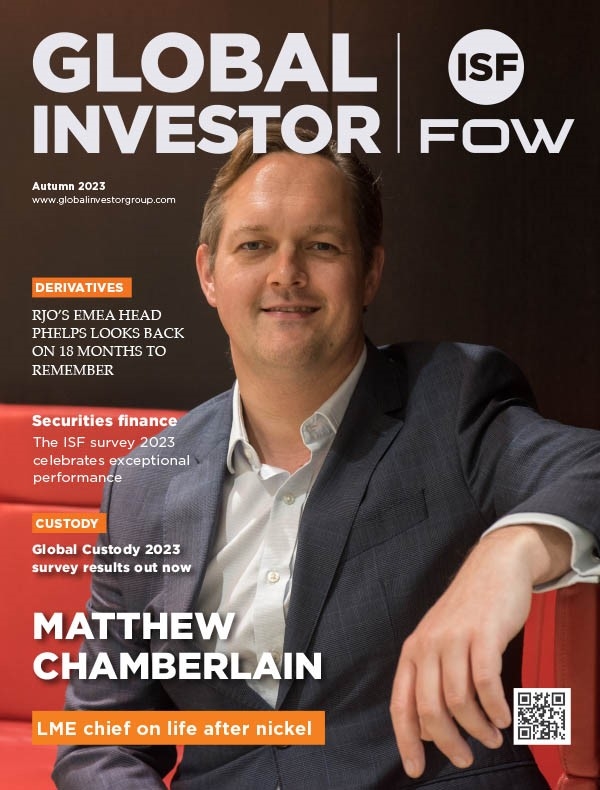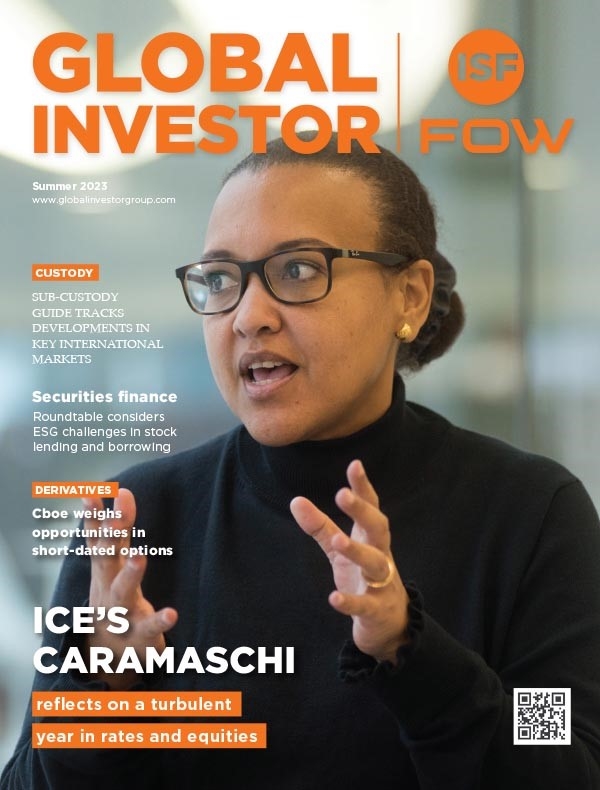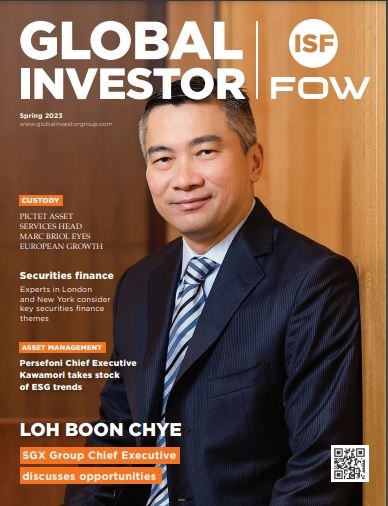Nomura: Are you maximising the value of your portfolio?

The traditional lending model is under unprecedented pressure with challenges to the GC balance model and other trading activities the industry had come to consider as core. “The importance of GC to our annual targets diminishes every year and this is the case with most lenders on the street, hence it is imperative to look for new areas of revenue generation,” notes Ben Meaden from Aviva.
The business challenges have emanated from many channels. As traditional revenue streams reduce and associated costs rise, many institutions are taking a sober review of their activities. Simon Heath from Citibank observes that “increased regulation, operating model-based costs and more finite financial resources are all issues confronting our business model”.
Encouragingly, a number of new revenue opportunities have arisen as institutions look for alternative sources of return from their portfolios in order to improve overall fund performance or outperform benchmarks. To that end, Rob Chiuch at BNY Mellon, believes “technological innovation at this point in our industry’s lifecycle is key”.
As a result, it seems the pendulum has swung towards intrinsic value trades. Evidence suggests that in the past a significant proportion of holders have left revenue on the table by not maximising the value inherent in their portfolios. While these opportunities have existed for some time, beneficial owners have tended to not execute due to an aversion to perceived risk and/or an indifference to the economic value added.
Securities finance participants, including Nomura, are increasingly looking to create robust and transparent client solutions to enable holders to unlock these revenue streams whilst minimising any risk and operational impacts.
These solutions can be developed directly with asset owners, or increasingly, with assistance from their agents and custodians. Below, we discuss three areas where we believe there is significant upside with key market practitioners. These are not exhaustive, but aim to highlight the key trades that appear to be gaining traction with our institutional clients.
Corporate events
Institutions can maximise the value of their portfolios by ensuring they are optimising the manner in which voluntary corporate actions are managed. Voluntary actions or elective events can include rights issues, tender buybacks, scrip dividends and certain aspects of takeovers. All of these offer arbitrage opportunities that provide holders revenue uplift if managed efficiently.
For example, a rights issue offers shareholders the opportunity to purchase shares; (usually) at a discount and, regardless of the clients’ long term intention, these events can offer an outperformance opportunity if traded correctly.
At Nomura, we aim to mitigate the transactional execution risk of the opportunity whilst at the same time offering clients a stable revenue stream on a portfolio basis. John Shellard at JPMorgan says: “We are actively discussing these opportunities with clients. Passively managed funds and index trackers tend to be more engaged in having the corporate actions conversation compared to those actively managing positions as the alpha generated makes a real difference”.
Our own analysis also suggests that a number of funds are not fully optimising their portfolios when it comes to the underlying optionality in corporate actions. By using a corporate action platform to manage such events, institutions can ensure their portfolio outperformance is optimised.
Consistently, we found that clients were better able to outperform the market when using a dedicated platform rather than attempt to manage themselves or transact on a case-by-case basis. John Atkins, head of prime financing trading at Nomura, gives an example: “Optionality offered by the Total scrip dividend programme has recently paid our clients up to 63 bps regardless of jurisdiction”.
Historically, institutions that are restricted in lending securities were unable to participate in the upside of these opportunities. Phil Morgan, head of prime finance sales at Nomura, comments that in answer to this “the team has developed a solution offering enhancement without the need to transfer or lend securities, thereby eliminating much of the change of ownership and correlated corporate governance issues facing clients”.
Collateral transformation
Regulatory-driven demand has caused a widespread increase in appetite for highquality liquid assets (HQLA); hence the collateral transformation trade has developed as an elegant solution.
The impact or at least the interpretation of regulation has created something of an unlevel playing field across the sell side sector. Nick Hay from BlackRock notes that “trade structures and documentation are not uniform across dealers and this plays out in how they bid for transformation opportunities.”
The liquidity coverage ratio (LCR) is one such regulatory requirement driving the demand for HQLA. This states that banks must hold sufficient HQLA to cover a stress scenario of net cash outflows over a 30-day period. As the demand for >30-day term activity increases, the fee that lenders can demand has also increased (with some estimating fee inflation in excess of 50% over the past 18 months).
Institutions can receive a return far in excess of standard lending fees for enabling collateral transformation. “If you are a fixed income lending client and want to increase your revenue streams you really need to look at the non-cash space and your collateral flexibility,” says Shellard at JPMorgan. “A trade of lending government bonds vs cash has limited opportunity in the current regulatory and yield environment”.
The increased demand for HQLA is not in debate and there seems an abundance of it, with one agent lender calculating its HQLA AUM at over $500bn. So it appears that the key factor driving access is pricing. Chiuch notes, “an upgrade for one side of the trade is a downgrade for the other and transformation brings with it an increased regulatory burden”.
Simon Heath from Citi, meanwhile, believes that “the appetite for collateral transformation really depends on your risk return pay off ”. With returns improving, we believe it is inevitable an increasing number of entrants will look to capitalise on this opportunity.
Although there is no minimum trade hurdle size, those who currently enter into this type of trade tend to be the larger position holders. Furthermore, similar to corporate action trades, there are still a number of market participants precluded from entering this kind of trade, most notably Ucits funds.
Hence the demand for institutions to develop wholesale solutions that overcome these obstacles. ”This is where institutions need to provide a pivotal role in the idea generation,” according to Hay, who adds that “the role of a lending desk has evolved from purely being a liquidity intermediary to actively being able to price the risk inherent in transactions”.
Cash and FX outperformance
We have seen multiple market publications bemoaning banks’ ability or willingness to take cash with emotive titles such as ‘cash is trash’ referencing the impact of regulations such as CASS rules and LCR. Clearly the market has been presented with a conundrum regarding how to manage cash. In response, institutions including Nomura are developing a range of cash reinvestment solutions offering clients outperformance on cash balances (certainly relative to the more traditional repositories).
These range from traditional secured to more structured unsecured solutions and can be traded via cash and synthetic delta one routes across various tenors. The types of institutions who actively use this product have stable cash balances, including insurance companies and asset managers. However, an interesting market dynamic is the entrance of large corporates and hedge funds into this arena.
The Nomura total return swap funding product, for example, looks at secured funding using equities as collateral, where clients receive a choice of fixed or floating return. Yoshi Aoyama from BlackRock comments that he “sees an increased demand for such synthetic transactions as a result of increased focus on balance sheet”.
Unsecured trades such as a ‘box swap’ offer clients significant returns to reflect the counterparty risk they bear, but it is acknowledged these are more relevant for asset managers or corporates with long cash positions on deposit.
As with most investments, the quality and term of the structure is reflected in the relative pricing and outperformance they receive. “I don’t think this
Chiuch continues with a note of caution around the funding arena. “There is uncertainty as we head into Q4. For the first time we are going to see the direct effects of the GSIB surcharge. Some dealers will rush to reduce balance sheet and this will cause a lot of market rotation, if not dislocation.”
Cash outperformance opportunities also present themselves in the FX markets, especially as client’s FX exposures have become more varied. This, coupled with increased market volatility globally, means institutions can enable their clients to benefit from these implied FX trading spreads on their positions.
Clients can capitalise on these market opportunities by accessing them via a bank with a strong financial infrastructure, product range and market position. Jon Atkins at Nomura notes, “the nature of these strategies are increasingly evolving from the standard US/Euro space and more towards APAC and the emerging markets”.
Clearly, for the securities finance industry to maintain its momentum, it needs to continue to evolve and innovate, especially around improving access to intrinsic value trades.
This may be by better tailoring to market restrictions, being more transparent with owners, as well as improving the operational ease of execution. Ben Meaden at Aviva comments that “trading in general is becoming more bespoke with increased complexity and pricing”.
Interestingly, there does seem to be some regional variation in terms of expectations of growth. Yoshi Aoyama from BlackRock notes that “for clients based in Asia there are a lot of opportunities, such as the structural change in the Japanese pension industry where clients are becoming more open in terms of optimal ways to generate more alpha. Here securities financing offers them a viable solution”.
“The future of the securities financing industry is evidently very different from what has existed and what exists today. We can only expect the industry to morph and continue to be shaped by the multiple challenges the industry faces,” comments Ben Challice, global head of prime finance at Nomura.
“It is imperative that we collectively maintain the pace of innovation and problem solving to ensure that all participants in the value chain are able to benefit from these outperformance opportunities.”
For further information contact Phil Morgan, head of Emea prime finance at Nomura – philip.morgan@nomura.com. Tel: +44 (0) 20 71032025
Found this useful?
Take a complimentary trial of the FOW Marketing Intelligence Platform – the comprehensive source of news and analysis across the buy- and sell- side.
Gain access to:
- A single source of in-depth news, insight and analysis across Asset Management, Securities Finance, Custody, Fund Services and Derivatives
- Our interactive database, optimized to enable you to summarise data and build graphs outlining market activity
- Exclusive whitepapers, supplements and industry analysis curated and published by Futures & Options World
- Breaking news, daily and weekly alerts on the markets most relevant to you



